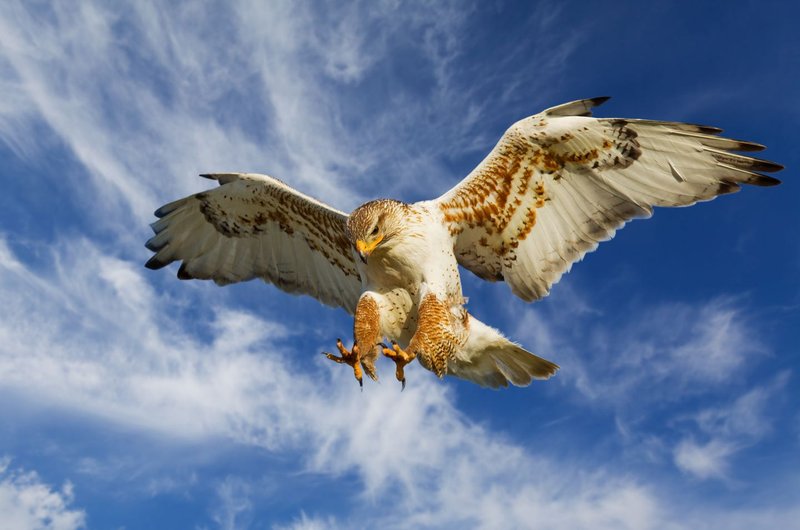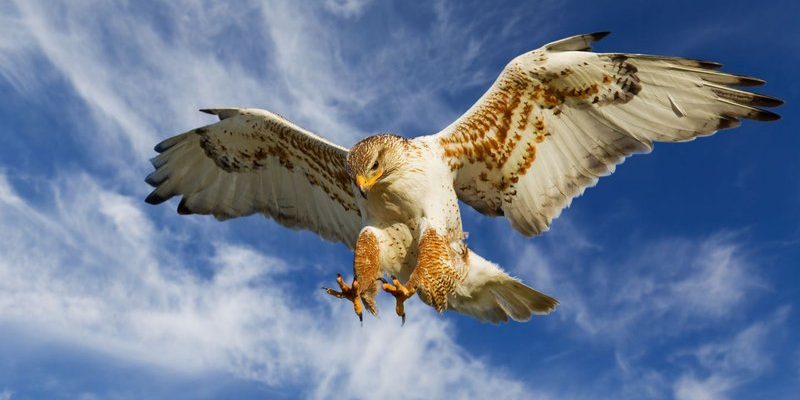
In this article, we’ll take a closer look at the global habitats and ranges of the Ferruginous Hawk. Think of it as a little adventure guide. Whether you’re planning a trip to see these raptors or just daydreaming about your next nature excursion, we’ll cover everything from their preferred environments to the best locations for spotting them. So grab your binoculars—let’s dive in!
What is the Ferruginous Hawk?
The Ferruginous Hawk is one of the largest hawks in North America and is easily recognized by its distinctive coloring. With a wingspan that can reach nearly five feet, this bird is a sight to behold. Its feathers are a mix of stunning browns and rust colors, which help it blend into the open landscapes it calls home. If you’re not familiar, you might think of it as the gentle giant of the hawk family.
These hawks primarily feed on small mammals like rabbits and rodents, making them valuable players in their ecosystems. They typically hunt from a perch, scanning the ground for movement. Once they spot their prey, they swoop down with incredible speed and precision. It’s a thrilling spectacle of nature that many bird watchers dream of witnessing.
North American Range
The Ferruginous Hawk calls the vast open areas of North America home. Their range stretches from southern Canada down through the western United States to northern Mexico. You might be wondering where exactly to find them within this impressive territory.
In the U.S., some prime locations include states like Montana, Wyoming, and Colorado. These regions provide the wide-open spaces and grasslands that the hawks prefer. During the warmer months, you can often spot them soaring high above fields or perched on fence posts. Their striking silhouette against the sky is a delightful sight for any nature enthusiast.
Breeding Grounds
During the breeding season, Ferruginous Hawks are particularly territorial. They build large nests made of sticks, often found on cliffs or tall trees. It’s interesting to note that these hawks often return to the same nesting sites year after year. Typically, they choose areas near open grasslands to hunt for food to feed their young.
If you’re keen on spotting them during this time, late spring and early summer are your best bets. Look in areas where the grass is tall and dense, as these habitats support the small mammals they hunt. Just be sure to keep your distance during nesting season; these birds are fiercely protective of their young.
Preferred Habitats
Ferruginous Hawks thrive in a variety of habitats, but there are certain environments where you’ll find them more often. Open plains, grasslands, and scrublands are their favorites. They prefer places with low vegetation that allow them to spot prey easily.
Here are a few key habitats where these hawks are commonly found:
- Grasslands: Wide-open spaces with short grasses attract rodents, making it an ideal hunting ground.
- Deserts: Areas with sparse vegetation can be suitable, especially if they have nearby perches for hunting.
- Wooded Areas: Although they prefer open spaces, they often nest in trees or on cliffs near woodlands.
- Farmlands: Agricultural areas can also be great spots since they attract rodents that thrive near crops.
Each of these habitats offers the Ferruginous Hawk plenty of opportunities for hunting and nesting. If you’re scanning these areas, keep your eyes peeled for their strikingly large wings and characteristic flight pattern.
Migration Patterns
You might be curious about where Ferruginous Hawks go during different seasons. Unlike some migratory birds that travel vast distances, these hawks have more localized migration habits. Many of them breed in northern parts and migrate south to find warmer climates in the winter months.
In the late fall, you can spot them as they move to places with milder weather, such as southern California or the southwestern U.S. Migration can be a fantastic time to see these birds in larger numbers. If you’re an early riser, visiting during the dawn or dusk hours can increase your chances of spotting them as they engage in their daily routines.
To witness this migration, plan your trips between September and November, and then again from March to April when they return for breeding.
Best Locations for Spotting Ferruginous Hawks
If you’re ready to embark on a birdwatching adventure, some locations stand out for viewing Ferruginous Hawks. Here’s a round-up of the best spots:
- The Rocky Mountain Region: Places like Rocky Mountain National Park and the surrounding foothills offer ample opportunities to spot these hawks.
- The Great Plains: States like Nebraska and Kansas are hotspots during migration and breeding seasons.
- Northern California: The grasslands here are ideal hunting grounds, and you might spot several hawks in one visit.
- National Wildlife Refuges: Many refuges across the U.S. are excellent for hawk watching, especially during migration.
Visiting these locations armed with binoculars and patience can reward you with memorable encounters. Each trip becomes an opportunity to learn more about the captivating lives of these birds.
Conservation Status
Unfortunately, like many species, the Ferruginous Hawk faces challenges related to habitat loss and environmental changes. They rely on open spaces, which are increasingly being developed or altered for agriculture and urban expansion. This makes understanding their conservation status important for bird enthusiasts and nature lovers alike.
Conservation efforts are underway to protect their habitats. Organizations focused on wildlife conservation work to ensure that these birds have safe nesting areas and hunting grounds. Engaging with local conservation efforts, whether through volunteering or simply spreading awareness, can be a great way to support Ferruginous Hawks.
You might also consider participating in local bird counts or citizen science projects. These activities help scientists gather data on bird populations and conservation needs.
How You Can Get Involved
If you’re passionate about spotting Ferruginous Hawks, there are many ways to contribute to their well-being. Here are some simple steps you can take:
- Educate Yourself: Learn more about their habits and habitats. Understanding their needs is the first step to helping.
- Join Local Birdwatching Groups: Connect with others who share your passion. You might discover new viewing spots or learn about group outings.
- Support Conservation Organizations: Contributing to or volunteering with groups dedicated to wildlife preservation can make a real difference.
- Advocate for Wild Spaces: Support policies that protect open lands and minimize development in crucial habitats.
Your efforts can help ensure that future generations will be able to enjoy the sight of a Ferruginous Hawk soaring through the skies, just as we do today.
In conclusion, the Ferruginous Hawk is not just a bird; it’s a fascinating symbol of the ecosystems they inhabit. By understanding where to spot them and how to protect their habitats, you can enjoy their beauty while contributing to their survival. So next time you’re outdoors, remember to look up—you might just catch a glimpse of these magnificent hawks in action!

